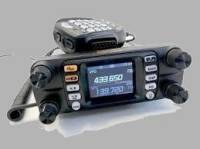| Press F5 To Refresh
Pages
E.A.A.R.S.
Eastern Arizona Amateur Radio
Society
A Tri-State Linked Repeater
System
Eastern Arizona's Ears To The
World
With Echolink &
IRLP
List Of
Open Repeaters:
146.86 and (440.700 Hub) Heliograph Peak
147.28 Guthrie Peak
- Greenlee County
145.21 Jacks Peak New
Mexico. Between Lordsburg & Silver City
145.41
Pinal Peak Near Globe AZ
147.16 Mt Lemmon Near Tucson
146.70 Greens Peak
Near Springerville - Showlow
145.27 South Mtn. Near Alpine, AZ
147.08
Mule Mtn. Near Bisbee in Cochise County
147.06 Lil Florida Mtn. Near Deming,
New Mexico
145.35 West Peak. West of Heliograph 12 miles, under
construction.
145.47 Caballo Mountain, Southeast of Truth or Consequences,
New
Mexico
* All EAARS network repeaters operate with PL tone
141.3
Bob Krueger,
AB7CQ
Web
Administrator
146.920/146.320 PL
123.0
444.600 / 449.600 PL
100 Repeater
IRLP Node: 7515 PL
114.8
ab7cqradio@ebidpal
Press F5 To Refresh
Pages
E.A.A.R.S.
Easteren Arizona Amateur Radio
Society
A Tri-State Linked Repeater
System
Eastern Arizona's Ears To The
World
With Echolink &
IRLP
List Of
Open Repeaters:
146.86 and (440.700 Hub) Heliograph Peak
147.28 Guthrie Peak
- Greenlee County
145.21 Jacks Peak New
Mexico. Between Lordsburg & Silver City
145.41
Pinal Peak Near Globe AZ
147.16 Mt Lemmon Near Tucson
146.70 Greens Peak
Near Springerville - Showlow
145.27 South Mtn. Near Alpine, AZ
147.08
Mule Mtn. Near Bisbee in Cochise County
147.06 Lil Florida Mtn. Near Deming,
New Mexico
145.35 West Peak. West of Heliograph 12 miles, under
construction.
145.47 Caballo Mountain, Southeast of Truth or Consequences,
New
Mexico
* All EAARS network repeaters operate with PL tone
141.3
Bob Krueger, AB7CQ
Web
Administrator
146.920/146.320 PL
123.0
444.600 / 449.600 PL
100 Repeater
IRLP Node: 7515 PL
114.8
ab7cqradio@ebidpal.com |
